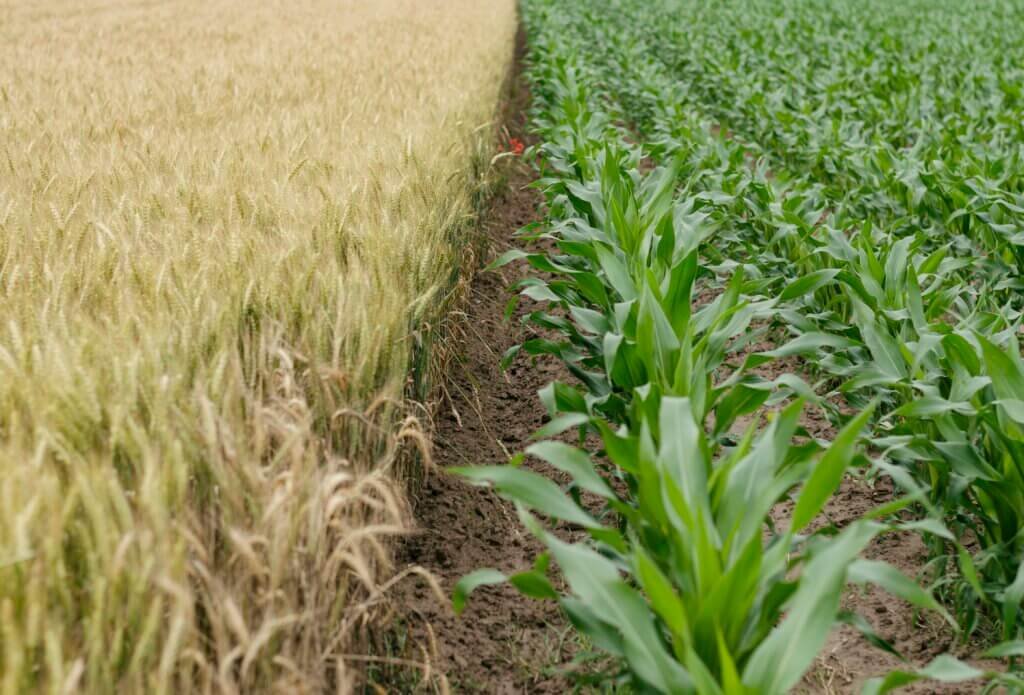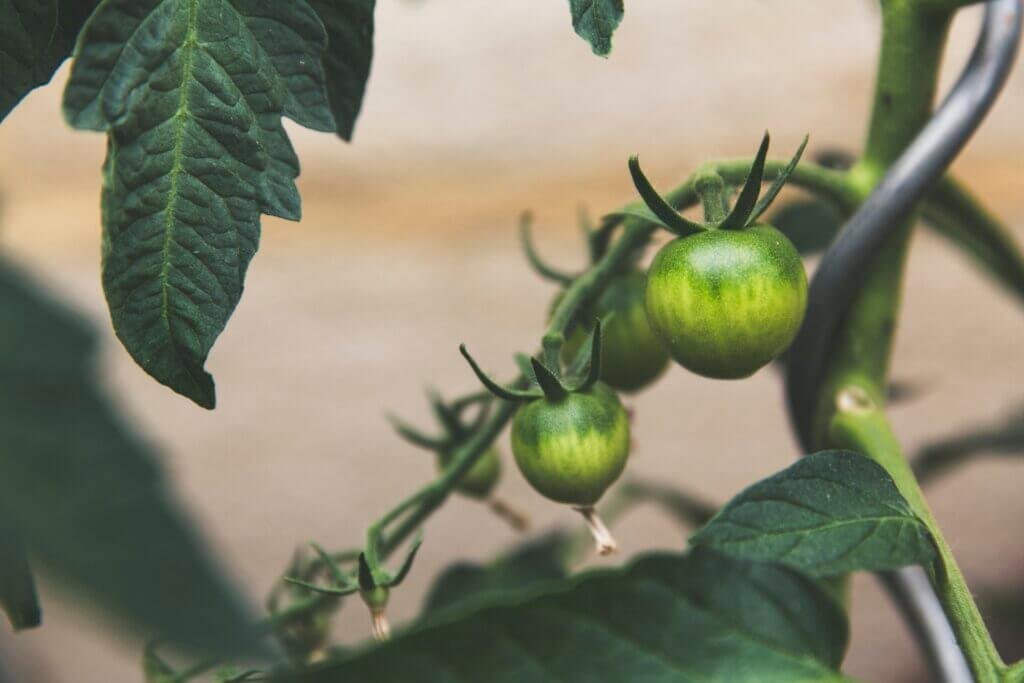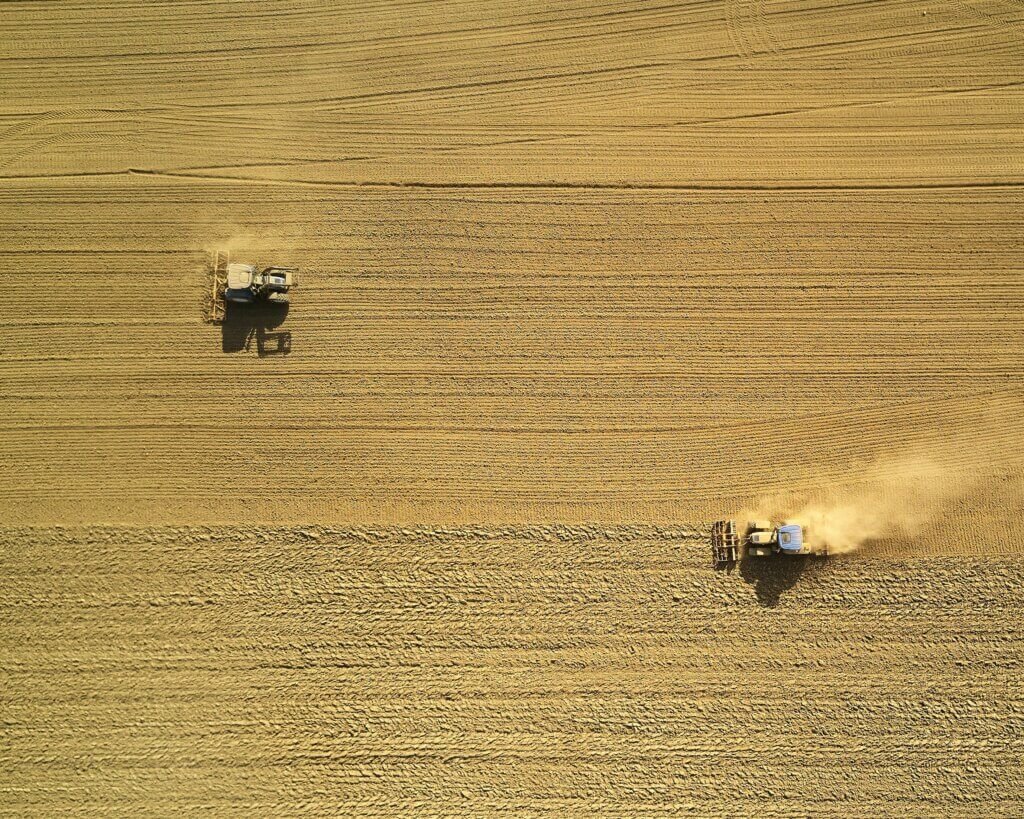You might be surprised to learn about the numerous advantages that farming brings to the lives of those who cultivate the land. From fostering economic growth to ensuring food security, farming plays a vital role in our society. In this article, we will explore some of the benefits that farmers enjoy, including the inherent connection to nature, the satisfaction of providing for others, and the opportunity to be a part of a resilient and sustainable industry. So sit back, relax, and prepare to delve into the world of farming and its many rewards.

Increased crop yield
Improved technology and equipment
Advancements in technology and equipment have played a crucial role in increasing crop yield for farmers. Modern machinery such as tractors, seed drills, and harvesters have made the planting, growing, and harvesting processes quicker and more efficient. Additionally, the use of precision farming techniques, such as GPS-guided systems and remote sensing, has allowed farmers to optimize the application of inputs, leading to higher yields.
Use of fertilizers and pesticides
The strategic use of fertilizers and pesticides has significantly contributed to increased crop yield. Fertilizers provide essential nutrients to the soil, boosting plant growth and improving yield. Pesticides help control the spread of pests and diseases, protecting crops from damage and ensuring a healthy harvest. Through carefully implementing these inputs, farmers can maximize their productivity and reduce the risk of crop loss.
Better crop rotation techniques
Crop rotation involves the practice of growing different crops in a particular sequence on the same piece of land. This technique helps replenish soil nutrients, manage pests and diseases, and control weed growth. By rotating crops such as legumes, which have the ability to fix nitrogen in the soil, with grains or vegetables, farmers can enhance soil fertility, leading to higher crop yields.
Diversification of income
Exploring multiple crops
Diversifying their crop portfolio allows farmers to mitigate risks and enhance their income. By cultivating a variety of crops, farmers can spread out their potential losses across different commodities. Additionally, certain crops may be more profitable or in higher demand during specific seasons, allowing farmers to maximize their profits throughout the year. The cultivation of multiple crops also contributes to ecological balance and strengthens the resilience of the farming system.
Livestock farming
For farmers, integrating livestock farming alongside crop production provides another source of income. Livestock farming, such as raising cattle, poultry, or goats, allows farmers to tap into the demand for meat, dairy, and other animal products. This diversification not only increases income but also creates opportunities for synergistic interactions between crops and livestock, such as using animal manure as organic fertilizer or employing rotational grazing to improve soil health.
Value-added products
Farmers can generate additional income through the production of value-added products. Value-added products refer to goods that have undergone processing or transformation to increase their market value. For example, farmers can transform their harvested fruits into jams, jellies, or preserves, or process their grain into flour or specialty food items. By adding value to their products, farmers can create unique selling points and increase their profit margins.
Access to global markets
Export opportunities
Access to global markets opens up new avenues for farmers to sell their products and expand their customer base. Export opportunities enable farmers to capitalize on the demand for high-quality agricultural goods beyond their local markets. Selling products internationally allows farmers to earn foreign exchange, boosting the overall profitability of their farming operations.
Meeting international standards
To participate in global markets, farmers must adhere to international standards and regulations. This requires the implementation of good agricultural practices, compliance with food safety and quality standards, and adherence to trade policies. By meeting these standards, farmers can demonstrate their commitment to producing safe and high-quality products, gaining the trust and confidence of international buyers.
Increasing profitability
Participating in global markets can significantly increase the profitability of farming operations. The higher demand and potential for earning competitive prices in global markets allow farmers to realize greater profits. Moreover, access to global markets often leads to increased market competition, encouraging farmers to continuously innovate, improve their processes, and offer superior products to remain competitive, further boosting their profitability.
Financial support and subsidies
Government grants and loans
Governments often provide financial support to farmers through grants and loans. These financial resources enable farmers to invest in equipment, infrastructure, and technologies that improve their farming operations. Government grants and loans can help farmers fund the initial costs of implementing newer technologies or expanding their agricultural enterprises, supporting their growth and productivity.
Subsidies for equipment and inputs
To facilitate the adoption of advanced farming practices, governments may offer subsidies for the purchase of agricultural equipment and inputs. These subsidies reduce the financial burden on farmers, making modern machinery, irrigation systems, fertilizers, and pesticides more accessible and affordable. By providing these subsidies, governments aim to promote the adoption of efficient and sustainable farming methods.
Insurance coverage
Insurance coverage for crop loss or damage due to natural disasters or adverse weather conditions can be an essential financial safety net for farmers. Crop insurance helps protect farmers from significant financial losses, enabling them to recover and continue their operations after an unfortunate event. By having access to insurance coverage, farmers can mitigate risks and ensure the sustainability of their farming businesses.

Improved farming practices
Precision farming techniques
Precision farming techniques involve the use of technology to precisely manage inputs, such as water, fertilizers, and pesticides, according to the specific needs of each crop. By utilizing tools like GPS, sensors, and data analysis, farmers can optimize resource allocation and minimize wastage. Precision farming not only increases productivity but also reduces environmental impacts, making it a win-win approach for farmers and the planet.
Water conservation methods
Water scarcity is a significant challenge in many agricultural regions. Therefore, the adoption of water conservation methods is crucial for farmers. Techniques such as drip irrigation, rainwater harvesting, and efficient water management systems help optimize water usage, minimize water wastage, and sustain crop production even in water-stressed areas. Implementing water conservation methods ensures the availability of this vital resource for both current and future farming needs.
Soil health management
Maintaining healthy soil is essential for sustainable and productive farming. Farmers utilize various soil health management practices, such as cover cropping, crop residue management, nutrient management, and soil testing. These practices promote soil fertility, enhance nutrient cycling, prevent erosion, and improve overall soil quality. By prioritizing soil health, farmers ensure the long-term viability of their farming operations and maximize their crop yields.
Reduced environmental impact
Conservation tillage
Conservation tillage practices involve minimizing soil disturbance during planting and cultivation. By reducing or eliminating tillage operations, farmers can prevent soil erosion, improve water infiltration, and enhance organic matter content. Conservation tillage also helps retain soil moisture, mitigates greenhouse gas emissions, and minimizes energy consumption. By adopting conservation tillage methods, farmers can minimize their ecological footprint while maintaining or even increasing their crop yields.
Organic farming practices
Organic farming practices have gained significant popularity due to their focus on sustainability and environmental compatibility. Organic farmers prioritize soil health, biodiversity conservation, and the use of organic fertilizers and pest control methods. By avoiding synthetic chemicals and genetically modified organisms, organic farming reduces chemical residues in food, protects pollinators and beneficial organisms, and preserves the quality of soil and water resources.
Biodiversity conservation
Preserving and enhancing biodiversity is vital for sustainable agriculture. Farmers can contribute to biodiversity conservation by establishing habitat corridors, creating on-farm wildlife habitats, and practicing agroforestry. These measures promote biodiversity by providing shelter, food, and breeding grounds for native plants, insects, birds, and other species. Biodiversity conservation in agricultural landscapes improves ecosystem resilience, enhances natural pest control, and supports the long-term sustainability of farming systems.

Improved farm management
Record keeping and data analysis
Effective farm management requires proper record-keeping and data analysis. Farmers who maintain detailed records of their activities, inputs, and outcomes can make informed decisions and monitor the performance of their farming operations. Data analysis enables farmers to identify trends, evaluate the profitability of different crops or practices, and optimize resource allocation. Through accurate record-keeping and data analysis, farmers can enhance their efficiency, reduce costs, and maximize their yields.
Efficient resource allocation
Efficient resource allocation is crucial for maximizing productivity and profitability. By analyzing their farming practices, input usage, and output outcomes, farmers can identify areas where resources can be allocated more effectively. For example, optimizing the timing and amount of fertilizers, irrigation, and pest control inputs can lead to higher yields while minimizing waste. Efficient resource allocation allows farmers to achieve optimal production levels while minimizing costs and environmental impacts.
Risk management
Farming involves inherent uncertainties and risks, such as volatile market prices, extreme weather events, and crop diseases. Effective farm management includes strategies for risk identification, assessment, and mitigation. Farmers can employ diversification, hedging, insurance, and contingency plans to manage risks effectively. By implementing risk management measures, farmers can safeguard their livelihoods and ensure the stability and resilience of their farming businesses.
Access to agricultural extension services
Technical assistance and advice
Agricultural extension services provide farmers with technical assistance and expert advice on various aspects of farming. Extension agents offer guidance on crop selection, cultivation techniques, pest and disease management, and best agricultural practices. By having access to such services, farmers can stay updated with the latest research and innovations, receive customized recommendations, and enhance their knowledge and skills. Technical assistance and advice enable farmers to make informed decisions and adopt practices that lead to better yields and profitability.
Training and capacity building
Continuous training and capacity building are essential for farmers to improve their skills and adapt to new technologies and practices. Agricultural extension services offer training programs, workshops, and demonstrations on topics such as sustainable farming methods, post-harvest handling, and farm business management. These training initiatives equip farmers with the necessary knowledge, techniques, and tools to enhance their farming practices, increase their productivity, and diversify their income streams.
Access to new research and innovations
Agricultural extension services bridge the gap between farmers and the latest research and innovations in the agricultural sector. Extension agents serve as conduits for disseminating information about new crop varieties, improved farming techniques, and emerging technologies. By providing access to up-to-date information, extension services enable farmers to adopt innovative practices, experiment with new crop varieties, and incorporate technological advancements into their farming operations. This continual learning and exposure to new ideas drive agricultural progress and contribute to increased efficiency and sustainability.

Community support and partnerships
Farmers’ cooperatives
Farmers’ cooperatives provide a platform for collaboration, collective decision-making, and mutual support among farmers. By joining cooperatives, farmers can pool resources, share knowledge and experiences, and collectively engage in activities such as purchasing inputs, marketing their products, or accessing financial services. Through cooperative efforts, farmers can negotiate better prices, reduce marketing costs, and achieve economies of scale, ultimately increasing their profitability and ensuring the well-being of their community.
Shared resources and knowledge
In agricultural communities, sharing resources and knowledge fosters cooperation and sustainability. Farmers can collaborate on irrigation infrastructure, machinery, or storage facilities, allowing them to access resources that would be otherwise unaffordable individually. Sharing knowledge and experiences on best practices, crop selection, or marketing strategies builds a collective pool of expertise that benefits the entire community. By supporting one another and leveraging shared resources, farmers can overcome challenges and thrive together.
Collective marketing and bargaining power
Farmers face challenges in accessing competitive markets individually. However, by forming collective partnerships, they can gain stronger bargaining power. Through cooperatives or farmer associations, farmers can negotiate better prices, secure contracts, and access larger, more lucrative markets. Collective marketing efforts, branding, and certification can differentiate their products, increase their visibility, and attract premium buyers. By working together, farmers can achieve broader market reach, enhanced profitability, and improved conditions for their agricultural community.
Health benefits
Fresh and nutritious food
Farmers who grow their own food have access to fresh, high-quality produce. By consuming the fruits of their labor, farmers can enjoy nutritious and wholesome meals, contributing to their overall health and well-being. Fresh fruits, vegetables, and grains are rich in vitamins, minerals, and fiber, providing essential nutrients that support good health. Access to fresh and nutritious food is a significant benefit for farmers and their families.
Physical activity and outdoor work
Farming involves physical activity and outdoor work, which contribute to farmers’ health and fitness. Engaging in tasks such as planting, weeding, and harvesting requires physical exertion, promoting strength, endurance, and flexibility. Additionally, working outdoors exposes farmers to natural light and fresh air, which have been linked to improved mood, vitamin D production, and cardiovascular health. The physical activity and outdoor work involved in farming provide farmers with a healthy and active lifestyle.
Stress reduction and mental well-being
Working in nature and being connected to the land can have a positive impact on mental well-being. Farming offers a sense of purpose, satisfaction, and fulfillment that can counteract stress and contribute to overall mental wellness. The rhythm of the seasons, the satisfaction of a successful harvest, and the connection to nature’s cycles can all provide a sense of grounding and tranquility. Farming as a way of life often fosters a strong sense of community and belonging, which further enhances farmers’ mental well-being.
In conclusion, farmers benefit from a wide range of advantages that contribute to their livelihoods and well-being. Increased crop yield through improved technology, better farming practices, and the use of fertilizers and pesticides allows farmers to maximize their production. Diversification of income through exploring multiple crops, livestock farming, and value-added products mitigates risks and enhances profitability. Access to global markets, financial support, and subsidies provide opportunities for expansion and increased profitability. Improved farming practices, reduced environmental impact, and improved farm management result in higher efficiency and sustainability. Access to agricultural extension services, community support, and partnerships promote knowledge sharing, collaboration, and market access. Furthermore, farming offers health benefits, including access to fresh and nutritious food, physical activity, and stress reduction. Farmers play a vital role in providing food security and contributing to a sustainable future, and these benefits support and empower them in their noble endeavor.



